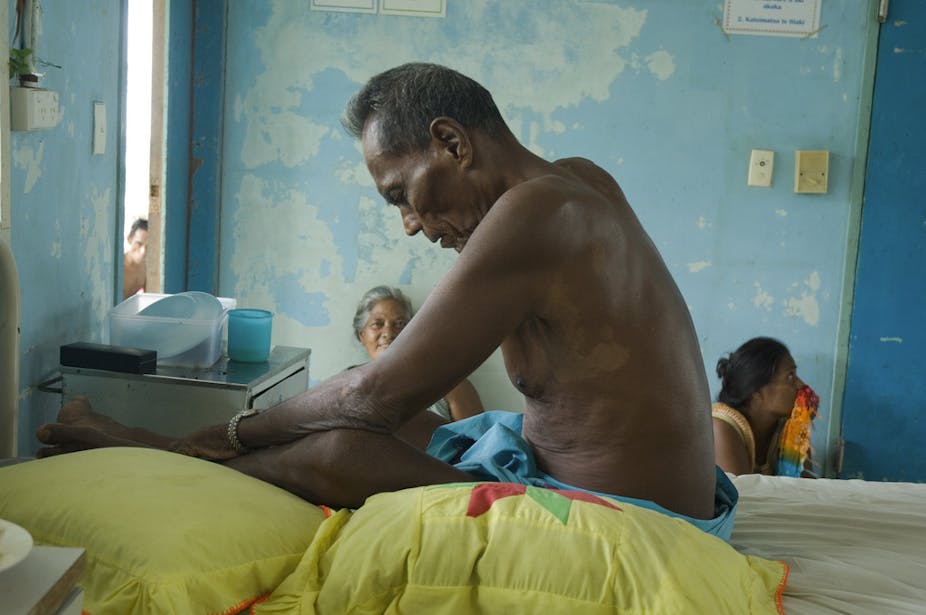Tuberculosis, or consumption as it used to be known, sounds like a disease that we’ve managed to fight off for good. But a drug-resistant strain of the bacteria that causes it is making a comeback, and it’s wreaking havoc where it can do most damage.
Multidrug-resistant tuberculosis is resistant to the two most important tuberculosis drugs. This strain of the disease has become a public health crisis because of its scale, impact and relative political neglect. Worse still, it’s hitting the poor and vulnerable hardest.
Nearly 60% of multidrug-resistant tuberculosis’ global burden occurs in the Asia-Pacific region. This frightening, still-evolving form of tuberculosis is more difficult and costly to diagnose, treat, and cure than consumption of old.
Deadly disease
Tuberculosis has likely killed more humans than any other infection in history. While the disease has been recognised throughout human history, steady progress in global control after World War II was dramatically disrupted by the start of the HIV pandemic.
Rapid increases in tuberculosis diagnoses at this time led to the World Health Organization declaring a global tuberculosis emergency in 1993. Infection rates have since stabilised, although absolute numbers are still massive, with 1.3 million deaths from the disease in 2012.
While other diseases continue to have significant impact worldwide, tuberculosis causes ten times more deaths than cholera, and more than twice as many as malaria each year.

Now progress against the disease is threatened by the steady increase in new drug-resistant tuberculosis infections, estimated at 450,000 people in 2012. Strikingly, over 80% of these people are not diagnosed or treated.
If this strain of tuberculosis is not specifically addressed, it will continue to spread through communities. In some countries of the former Soviet Union, for example, drug-resistant tuberculosis has now become the dominant strain of the disease.
Diagnosis difficulties
Tuberculosis is caused by the bacterium Mycobacterium tuberculosis, which spreads through the air. Symptoms are protracted and non-specific (cough, fever, and weight loss, for instance), making it difficult to diagnose.
If left untreated, one person may infect between ten and 15 others each year. The risks are highest in under-nourished communities where people live in crowded, poorly-ventilated conditions, such as shanty towns and other dense urban settlements.
Suspected cases able to access medical care will generally be asked to cough up a sputum (the mix of saliva and mucus that collects in the respiratory tract when you have an infection or disease) sample for testing under a microscope. This has been the frontline test to confirm TB since the late 1800s, but it misses up to 40% of cases.
Samples are transported to highly specialised laboratories to culture (grow) the bacterium and conduct drug-resistance tests; an expensive process that takes up to 12 weeks.
A recent technological breakthrough has led to the rollout of a machine that performs rapid genetic testing on sputum samples, allowing multidrug-resistant tuberculosis diagnosis in two hours.

But this is no magic bullet; using this machine requires more money, maintenance, and electricity than many hospitals in the worst-affected regions can provide. Meanwhile, waiting lists for multidrug-resistant tuberculosis treatment, even for those patients with the privilege of diagnosis, are growing.
Stemming the tide
Diagnosis is just the first hurdle in a long journey for multidrug-resistant tuberculosis patients. If they’re to beat the disease, they will need to complete a gruelling two-year ordeal of swallowing up to 20 pills per day, plus a daily injection for at least eight months.
The medications are powerful and can cause side effects that include vomiting, liver damage, deafness and even psychosis.
Despite their high individual treatment cost (200 times the price of treating ordinary tuberculosis), multidrug-resistant tuberculosis programs are quite cost-effective overall. Appropriate treatment stops the disease from being spread to others, and without these programs even more people would join waiting lists for help.
But if the global funding gap for the 2013-2016 period is not financed, an estimated one million lives will be lost. Besides this human cost, tuberculosis and its drug-resistant strain in particular, place an extraordinary economic burden on communities and trap people into poverty.
New vaccines, diagnostics and drugs are being developed, but critical gaps persist.
The vast majority of countries in the Asia-Pacific region, where it is rife, have limited capacity to mitigate the imminent threat of this disease. Investment and coordinated action from growing national economies and business enterprises within the region is needed.
Although ultimately solutions will involve strengthening health systems broadly, the threat of multidrug-resistant tuberculosis provides a clear focus to initiate action – Australia has the opportunity to demonstrate regional leadership by serving a pivotal coordinating function.

